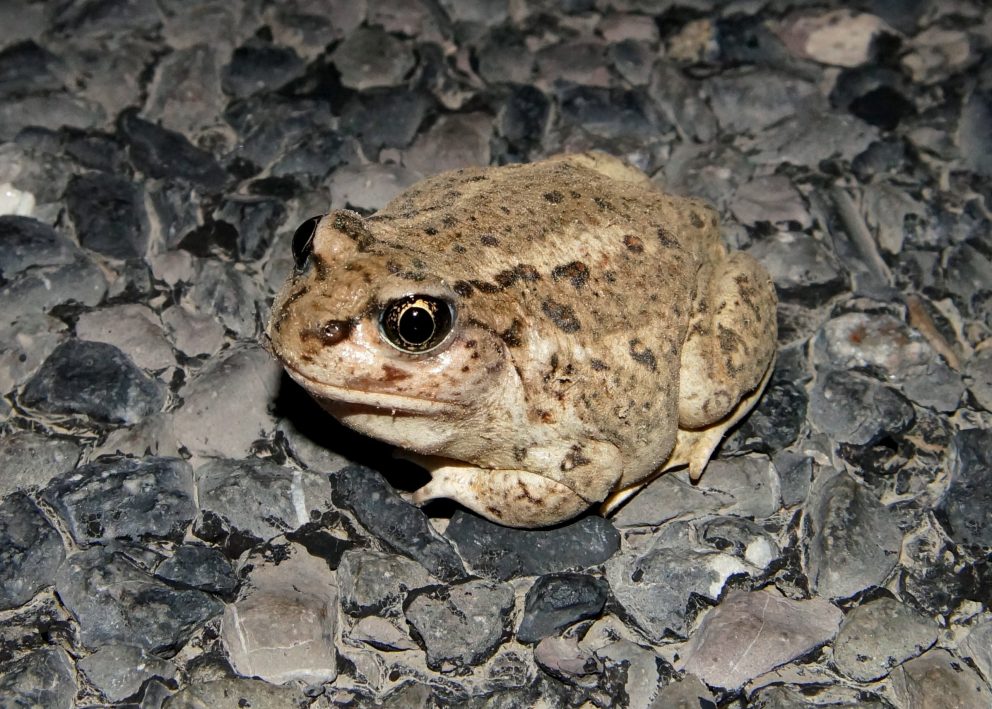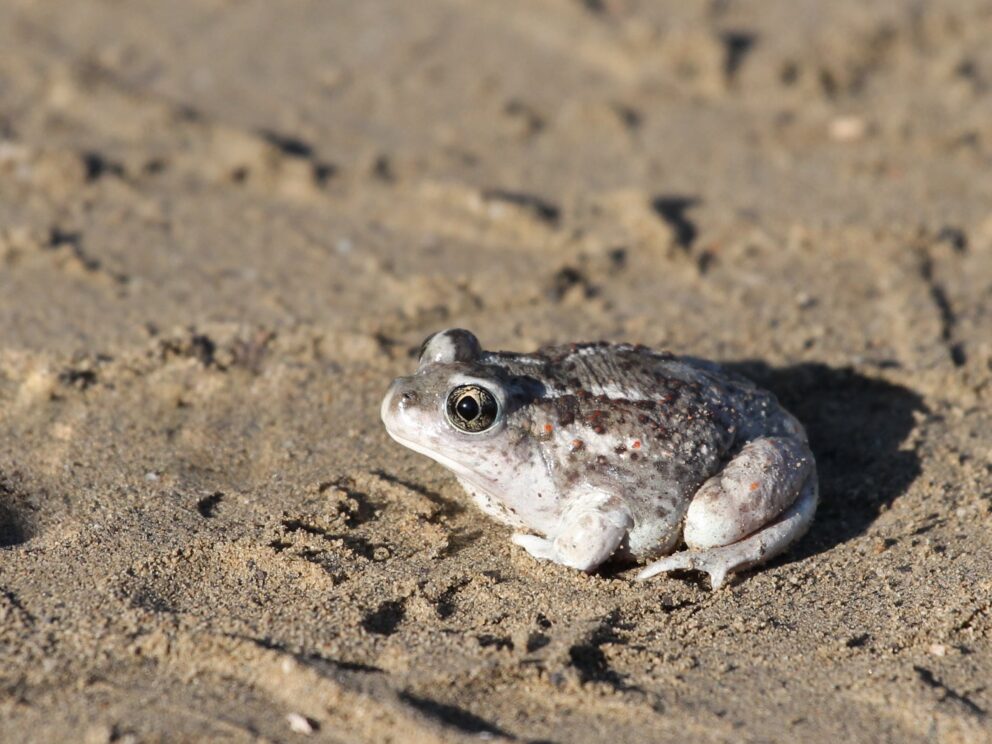- SCIENTIFIC NAME
- Spea intermontana
- CLASSIFICATION
- Amphibian
- LIFE SPAN
- 11-13 Years
- STATE CONSERVATION STATUS
-
- Priority Species
- FEDERAL CONSERVATION STATUS
- Least Concern
- GAME STATUS
- Non-Game
- Washoe
- Humboldt
- Pershing
- Churchill
- Mineral
- Lyon
- Douglas
- Carson City
- Storey
- Elko
- Lander
- Eureka
- White Pine
- Esmeralda
- Nye
- Lincoln
- Clark
Habitat & Range
This toad is found throughout Nevada except for some of the southern portion of the state. They are an arid toad that prefers sagebrush flats, pinyon-juniper woodlands, and desert shrublands. They need soft soils, so they can burrow to escape the desert heat.
- Cold desert shrubland and sagebrush
- Pinyon juniper forests
- Rivers and streams
Threats
- Disease
- Habitat Degradation
Natural History
The Great Basin Spadefoot is an amphibian that needs water to reproduce, but they will use temporary water sources if they need to. They’ll lay their eggs in rain pools, near intermittent streams, irrigation ditches and even flooded areas. Females will lay between 300 and 1000 eggs in small clusters. Eggs hatch after 2-4 days but will hatch slower if the water temperature is cold. Development of the tadpoles is dependent on water availability and temperature. If eggs are laid in an intermittent water source, tadpoles will develop faster. Great Basin Spadefoots do most of their foraging at night feeding on invertebrates such as beetles, flies, wasps, butterflies, moths, dragonflies, and spiders. These toads do not have much to protect themselves as adults and are preyed upon by rattlesnakes, coyotes, and burrowing owls. As tadpoles garter snakes, fish, and birds are threats. Adult Spadefoots can produce skin secretions that are poisonous or at the very least not palatable to their potential predators. The Great Basin Spadefoot is well adapted to its desert environment and doesn’t need much water. They will burrow underground using the ‘spades’ on their back feet or use abandoned burrows to avoid the hot desert sun.
Fun Facts














